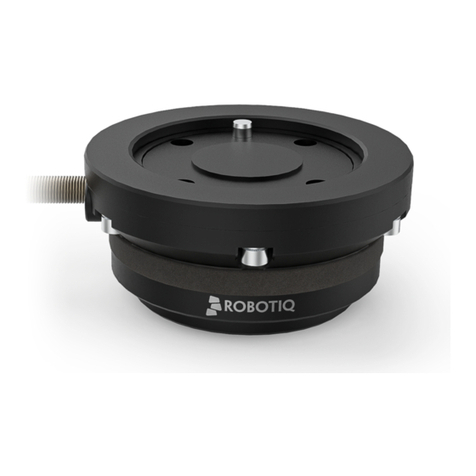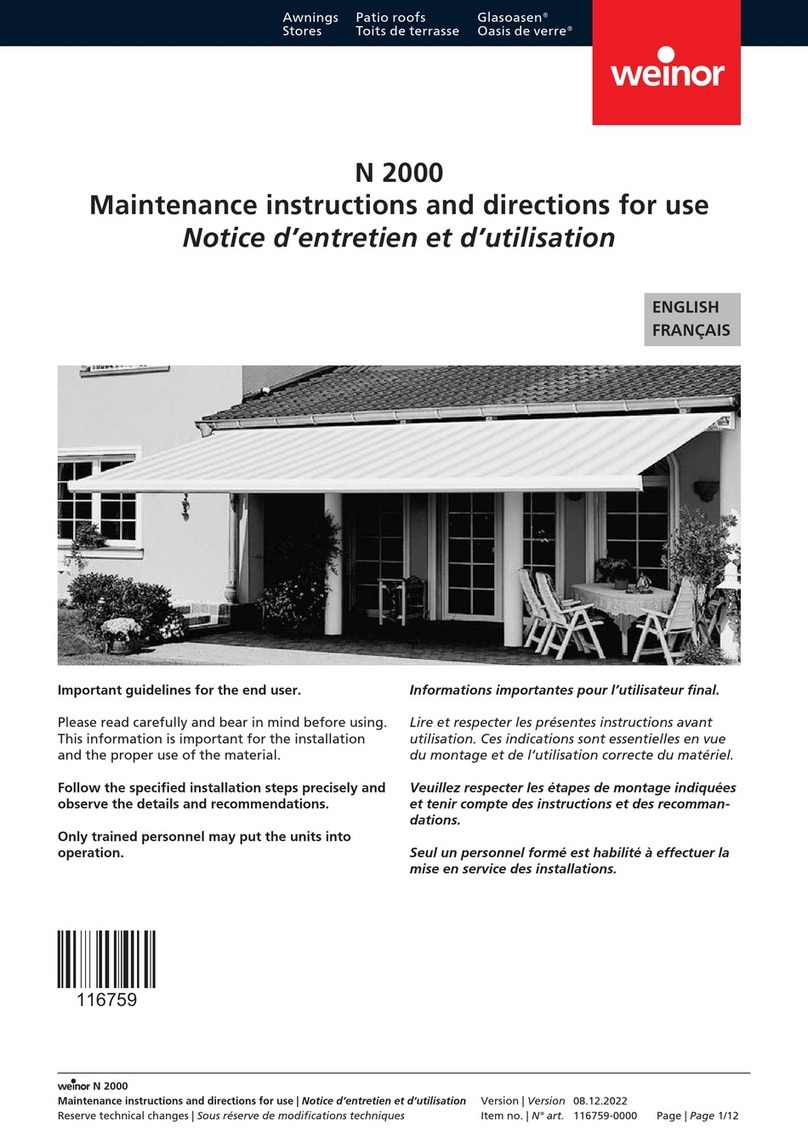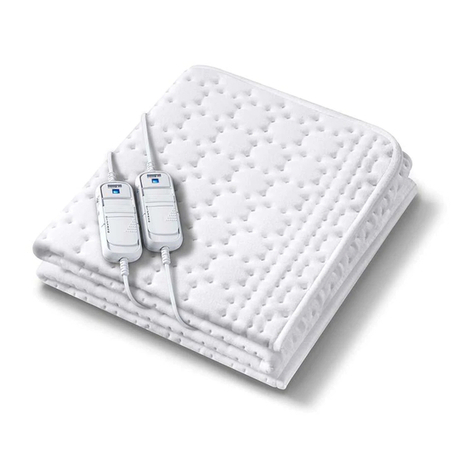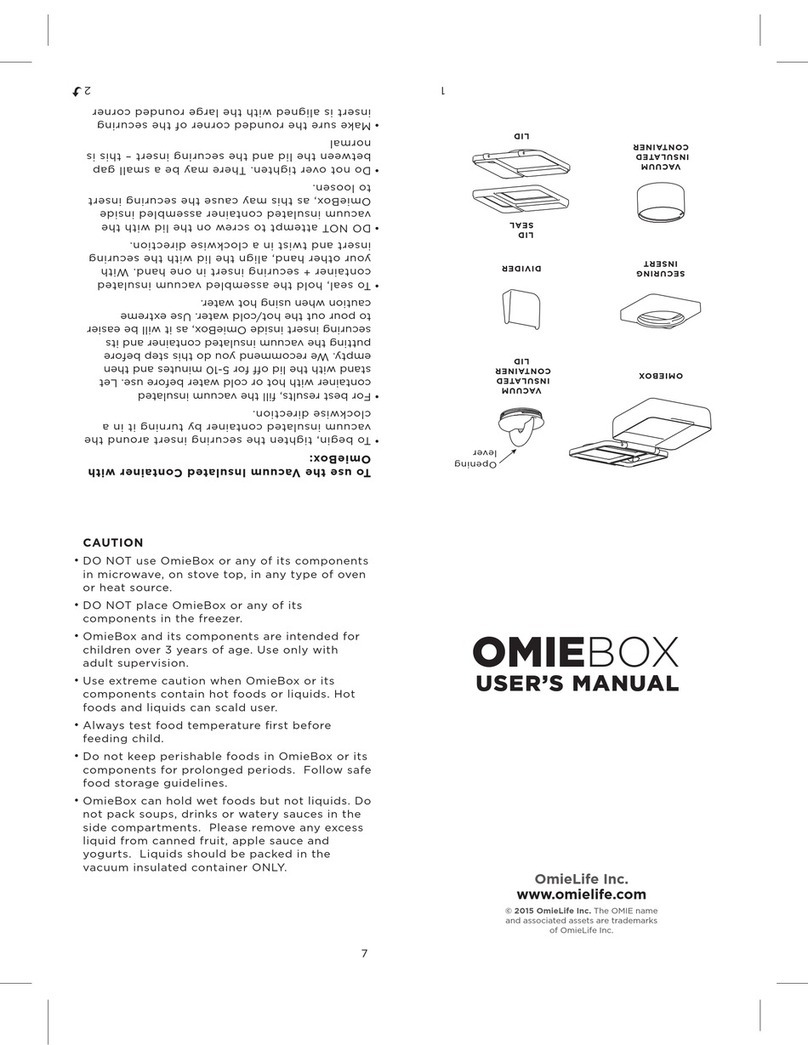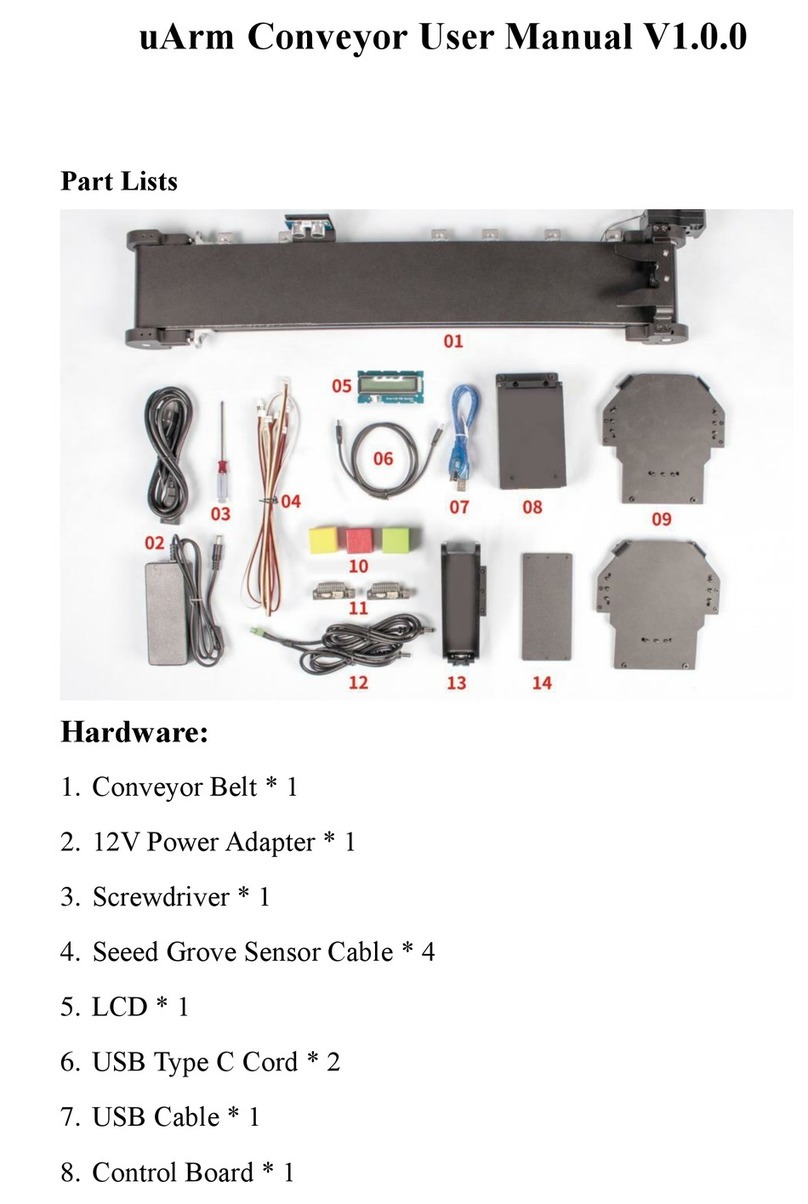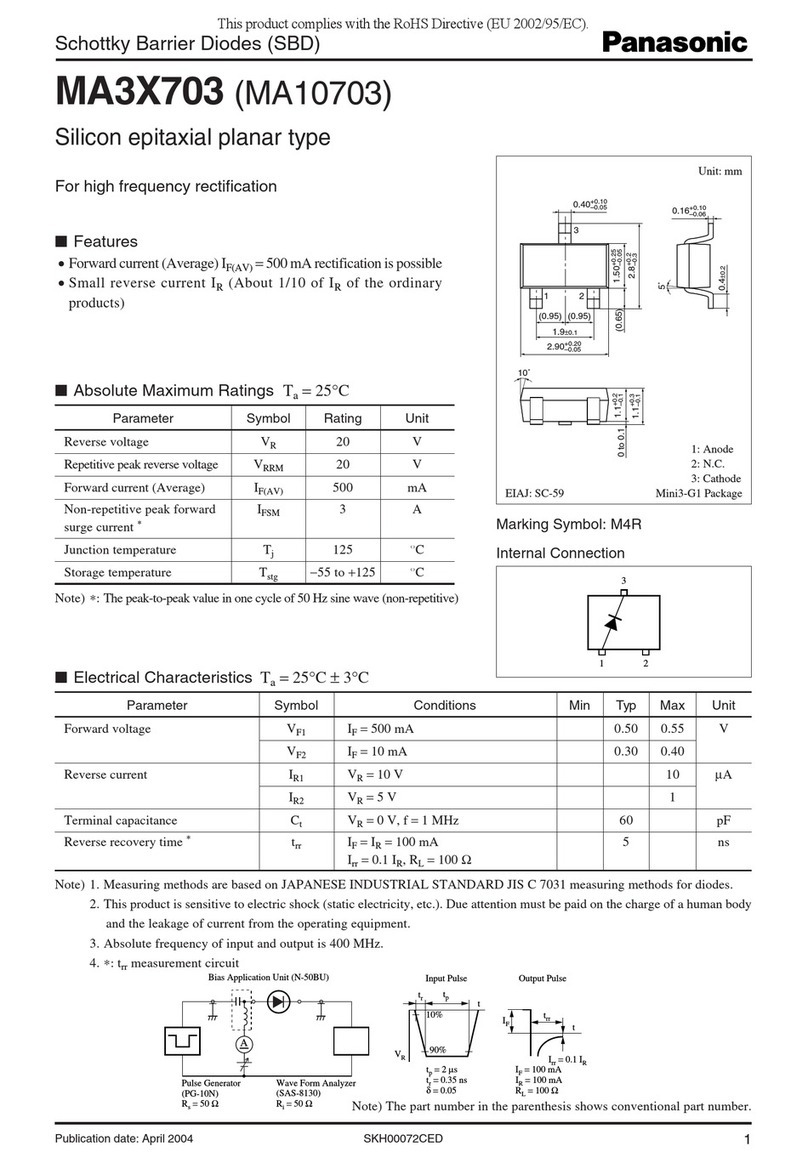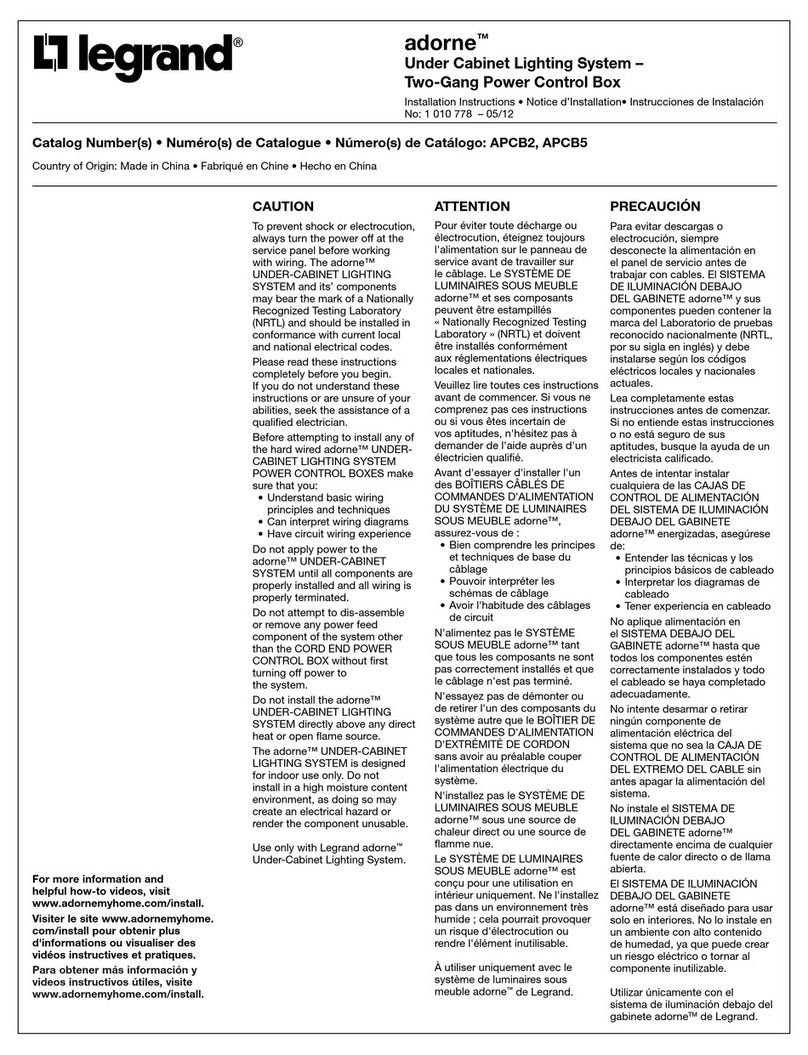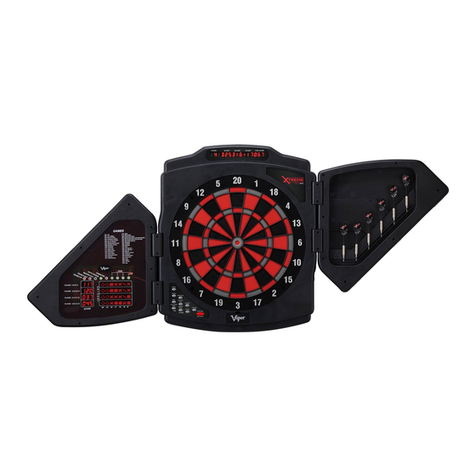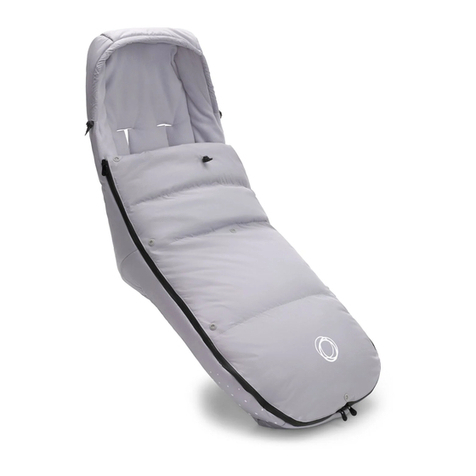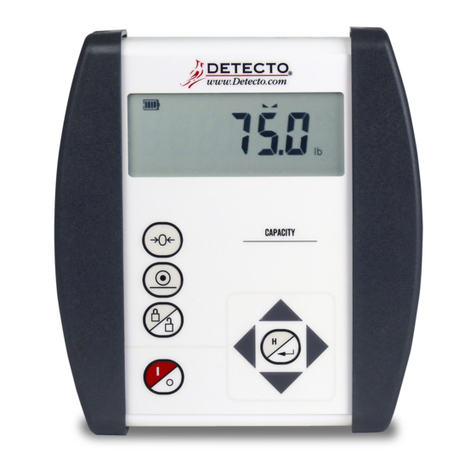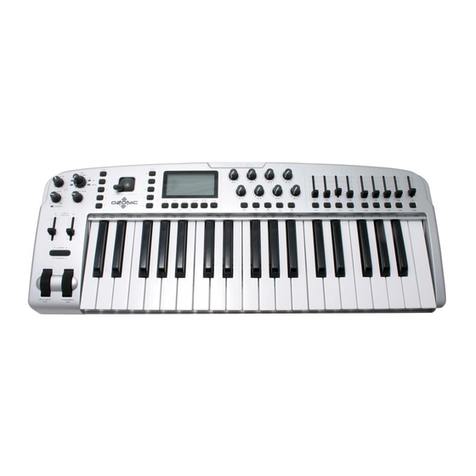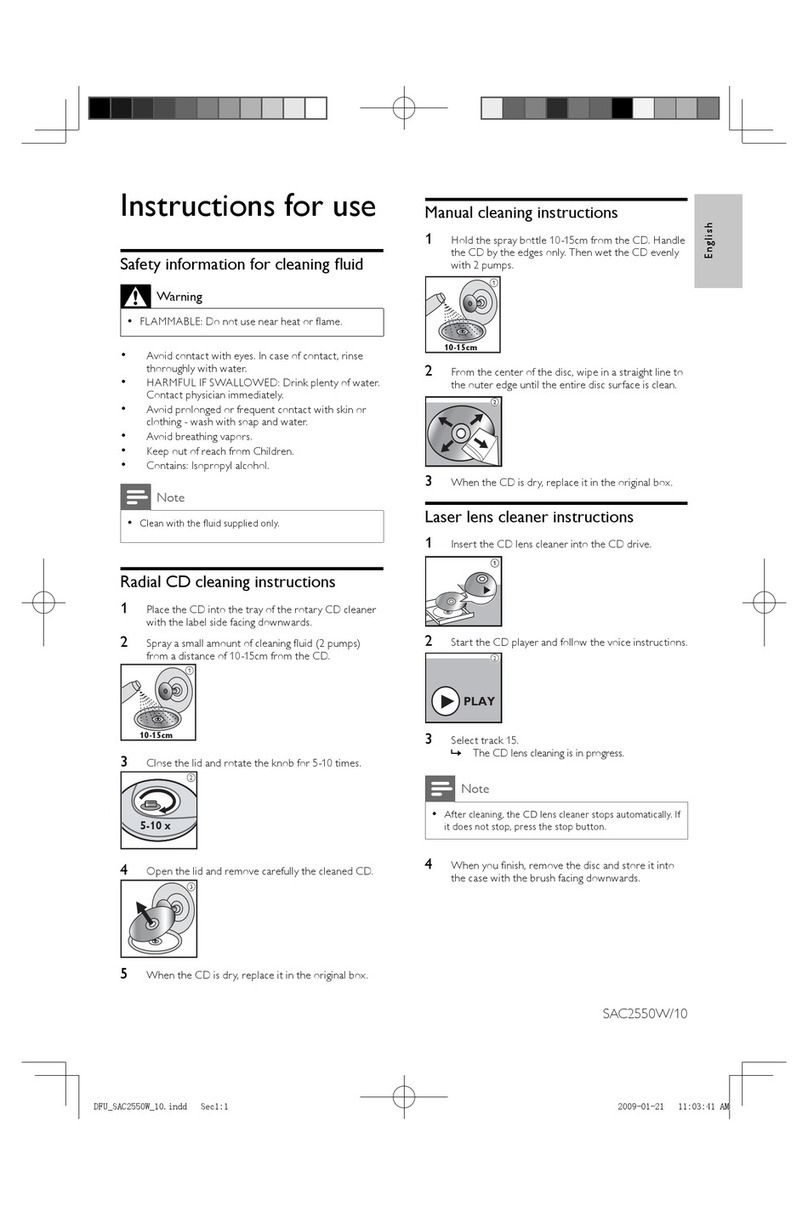ROBOTIQ FT 150 User manual

Table of Contents
Robotiq inc. © 2016 2
Home . . . . . . . . . . . . . . . . . . . . . . . . . . . . . . . . . . . . . . . . . . . . . . . . . . . . . . . . . . . . . . . . . . . . . . . . . . . . . . . . . . . . . . . . . . . . . . . . . . . . . . . 3
Revisions . . . . . . . . . . . . . . . . . . . . . . . . . . . . . . . . . . . . . . . . . . . . . . . . . . . . . . . . . . . . . . . . . . . . . . . . . . . . . . . . . . . . . . . . . . . . . . . . . 3
1. General Presentation . . . . . . . . . . . . . . . . . . . . . . . . . . . . . . . . . . . . . . . . . . . . . . . . . . . . . . . . . . . . . . . . . . . . . . . . . . . . . . . . . . . . . 4
2. Safety . . . . . . . . . . . . . . . . . . . . . . . . . . . . . . . . . . . . . . . . . . . . . . . . . . . . . . . . . . . . . . . . . . . . . . . . . . . . . . . . . . . . . . . . . . . . . . . . . 7
2.1 Warning . . . . . . . . . . . . . . . . . . . . . . . . . . . . . . . . . . . . . . . . . . . . . . . . . . . . . . . . . . . . . . . . . . . . . . . . . . . . . . . . . . . . . . . . . . . 9
2.2 Intended use . . . . . . . . . . . . . . . . . . . . . . . . . . . . . . . . . . . . . . . . . . . . . . . . . . . . . . . . . . . . . . . . . . . . . . . . . . . . . . . . . . . . . . . . 10
3. Installation . . . . . . . . . . . . . . . . . . . . . . . . . . . . . . . . . . . . . . . . . . . . . . . . . . . . . . . . . . . . . . . . . . . . . . . . . . . . . . . . . . . . . . . . . . . . . . 11
3.1 Scope of delivery . . . . . . . . . . . . . . . . . . . . . . . . . . . . . . . . . . . . . . . . . . . . . . . . . . . . . . . . . . . . . . . . . . . . . . . . . . . . . . . . . . . . 11
3.2 Environmental and operating conditions . . . . . . . . . . . . . . . . . . . . . . . . . . . . . . . . . . . . . . . . . . . . . . . . . . . . . . . . . . . . . . . . . . 12
3.3 Mechanical connections . . . . . . . . . . . . . . . . . . . . . . . . . . . . . . . . . . . . . . . . . . . . . . . . . . . . . . . . . . . . . . . . . . . . . . . . . . . . . . . 13
3.4 Power supply specifications . . . . . . . . . . . . . . . . . . . . . . . . . . . . . . . . . . . . . . . . . . . . . . . . . . . . . . . . . . . . . . . . . . . . . . . . . . . . 14
3.5 Wiring . . . . . . . . . . . . . . . . . . . . . . . . . . . . . . . . . . . . . . . . . . . . . . . . . . . . . . . . . . . . . . . . . . . . . . . . . . . . . . . . . . . . . . . . . . . . . 15
3.5.1 Wiring with USB to RS485 converter . . . . . . . . . . . . . . . . . . . . . . . . . . . . . . . . . . . . . . . . . . . . . . . . . . . . . . . . . . . . . . . . 16
3.5.2 Wiring with RS232 to RS485 converter . . . . . . . . . . . . . . . . . . . . . . . . . . . . . . . . . . . . . . . . . . . . . . . . . . . . . . . . . . . . . . 17
3.6 Calibration procedure . . . . . . . . . . . . . . . . . . . . . . . . . . . . . . . . . . . . . . . . . . . . . . . . . . . . . . . . . . . . . . . . . . . . . . . . . . . . . . . . . 18
3.6.1 Calibration procedure with Universal Robots . . . . . . . . . . . . . . . . . . . . . . . . . . . . . . . . . . . . . . . . . . . . . . . . . . . . . . . . . . 18
3.6.2 Calibration procedure for the Visual Demo Software (PC) . . . . . . . . . . . . . . . . . . . . . . . . . . . . . . . . . . . . . . . . . . . . . . . . 21
3.7 Status LED . . . . . . . . . . . . . . . . . . . . . . . . . . . . . . . . . . . . . . . . . . . . . . . . . . . . . . . . . . . . . . . . . . . . . . . . . . . . . . . . . . . . . . . . . 22
4. Software . . . . . . . . . . . . . . . . . . . . . . . . . . . . . . . . . . . . . . . . . . . . . . . . . . . . . . . . . . . . . . . . . . . . . . . . . . . . . . . . . . . . . . . . . . . . . . . 24
4.1 Development package . . . . . . . . . . . . . . . . . . . . . . . . . . . . . . . . . . . . . . . . . . . . . . . . . . . . . . . . . . . . . . . . . . . . . . . . . . . . . . . . 24
4.1.1 Linux . . . . . . . . . . . . . . . . . . . . . . . . . . . . . . . . . . . . . . . . . . . . . . . . . . . . . . . . . . . . . . . . . . . . . . . . . . . . . . . . . . . . . . . . . 26
4.1.2 Windows . . . . . . . . . . . . . . . . . . . . . . . . . . . . . . . . . . . . . . . . . . . . . . . . . . . . . . . . . . . . . . . . . . . . . . . . . . . . . . . . . . . . . . 28
4.2 ROS . . . . . . . . . . . . . . . . . . . . . . . . . . . . . . . . . . . . . . . . . . . . . . . . . . . . . . . . . . . . . . . . . . . . . . . . . . . . . . . . . . . . . . . . . . . . . . 30
4.3 Universal Robots driver package . . . . . . . . . . . . . . . . . . . . . . . . . . . . . . . . . . . . . . . . . . . . . . . . . . . . . . . . . . . . . . . . . . . . . . . . 31
4.3.1 Installing and testing . . . . . . . . . . . . . . . . . . . . . . . . . . . . . . . . . . . . . . . . . . . . . . . . . . . . . . . . . . . . . . . . . . . . . . . . . . . . . 32
4.3.2 Provided examples . . . . . . . . . . . . . . . . . . . . . . . . . . . . . . . . . . . . . . . . . . . . . . . . . . . . . . . . . . . . . . . . . . . . . . . . . . . . . . 34
4.3.3 Custom programs . . . . . . . . . . . . . . . . . . . . . . . . . . . . . . . . . . . . . . . . . . . . . . . . . . . . . . . . . . . . . . . . . . . . . . . . . . . . . . . 34
4.4 ActiveDrive toolbar for Universal Robots . . . . . . . . . . . . . . . . . . . . . . . . . . . . . . . . . . . . . . . . . . . . . . . . . . . . . . . . . . . . . . . . . . 35
4.4.1 ActiveDrive installation . . . . . . . . . . . . . . . . . . . . . . . . . . . . . . . . . . . . . . . . . . . . . . . . . . . . . . . . . . . . . . . . . . . . . . . . . . . 35
4.4.2 ActiveDrive features . . . . . . . . . . . . . . . . . . . . . . . . . . . . . . . . . . . . . . . . . . . . . . . . . . . . . . . . . . . . . . . . . . . . . . . . . . . . . 36
4.4.3 ActiveDrive troubleshooting . . . . . . . . . . . . . . . . . . . . . . . . . . . . . . . . . . . . . . . . . . . . . . . . . . . . . . . . . . . . . . . . . . . . . . . 38
4.5 Visual Demo Software . . . . . . . . . . . . . . . . . . . . . . . . . . . . . . . . . . . . . . . . . . . . . . . . . . . . . . . . . . . . . . . . . . . . . . . . . . . . . . . . 42
4.6 Serial communication . . . . . . . . . . . . . . . . . . . . . . . . . . . . . . . . . . . . . . . . . . . . . . . . . . . . . . . . . . . . . . . . . . . . . . . . . . . . . . . . . 43
5. Specifications . . . . . . . . . . . . . . . . . . . . . . . . . . . . . . . . . . . . . . . . . . . . . . . . . . . . . . . . . . . . . . . . . . . . . . . . . . . . . . . . . . . . . . . . . . . 45
5.1 Technical dimensions . . . . . . . . . . . . . . . . . . . . . . . . . . . . . . . . . . . . . . . . . . . . . . . . . . . . . . . . . . . . . . . . . . . . . . . . . . . . . . . . . 45
5.1.1 Robot side bolt pattern . . . . . . . . . . . . . . . . . . . . . . . . . . . . . . . . . . . . . . . . . . . . . . . . . . . . . . . . . . . . . . . . . . . . . . . . . . . 47
5.1.2 Tool side bolt pattern . . . . . . . . . . . . . . . . . . . . . . . . . . . . . . . . . . . . . . . . . . . . . . . . . . . . . . . . . . . . . . . . . . . . . . . . . . . . 48
5.2 Mechanical specifications . . . . . . . . . . . . . . . . . . . . . . . . . . . . . . . . . . . . . . . . . . . . . . . . . . . . . . . . . . . . . . . . . . . . . . . . . . . . . . 49
5.2.1 Moment of inertia and center of mass . . . . . . . . . . . . . . . . . . . . . . . . . . . . . . . . . . . . . . . . . . . . . . . . . . . . . . . . . . . . . . . 51
5.3 Signal specifications . . . . . . . . . . . . . . . . . . . . . . . . . . . . . . . . . . . . . . . . . . . . . . . . . . . . . . . . . . . . . . . . . . . . . . . . . . . . . . . . . . 52
5.4 Electrical ratings . . . . . . . . . . . . . . . . . . . . . . . . . . . . . . . . . . . . . . . . . . . . . . . . . . . . . . . . . . . . . . . . . . . . . . . . . . . . . . . . . . . . . 53
5.5 Couplings . . . . . . . . . . . . . . . . . . . . . . . . . . . . . . . . . . . . . . . . . . . . . . . . . . . . . . . . . . . . . . . . . . . . . . . . . . . . . . . . . . . . . . . . . . 54
5.5.1 Blank coupling . . . . . . . . . . . . . . . . . . . . . . . . . . . . . . . . . . . . . . . . . . . . . . . . . . . . . . . . . . . . . . . . . . . . . . . . . . . . . . . . . 55
6. Maintenance . . . . . . . . . . . . . . . . . . . . . . . . . . . . . . . . . . . . . . . . . . . . . . . . . . . . . . . . . . . . . . . . . . . . . . . . . . . . . . . . . . . . . . . . . . . . 57
7. Spare Parts, Kits and Accessories . . . . . . . . . . . . . . . . . . . . . . . . . . . . . . . . . . . . . . . . . . . . . . . . . . . . . . . . . . . . . . . . . . . . . . . . . . . 57
8. Troubleshooting . . . . . . . . . . . . . . . . . . . . . . . . . . . . . . . . . . . . . . . . . . . . . . . . . . . . . . . . . . . . . . . . . . . . . . . . . . . . . . . . . . . . . . . . . . 59
9. Warranty . . . . . . . . . . . . . . . . . . . . . . . . . . . . . . . . . . . . . . . . . . . . . . . . . . . . . . . . . . . . . . . . . . . . . . . . . . . . . . . . . . . . . . . . . . . . . . . 60
10. Contact . . . . . . . . . . . . . . . . . . . . . . . . . . . . . . . . . . . . . . . . . . . . . . . . . . . . . . . . . . . . . . . . . . . . . . . . . . . . . . . . . . . . . . . . . . . . . . . 61
Comments . . . . . . . . . . . . . . . . . . . . . . . . . . . . . . . . . . . . . . . . . . . . . . . . . . . . . . . . . . . . . . . . . . . . . . . . . . . . . . . . . . . . . . . . . . . . . . . . 62

Robotiq FT-150/300 Sensor Instruction Manual
Robotiq inc. © 2016 3
Home
Click the Robotiq logo at anytime to return to the support section homepage.
© Robotiq inc. 2016
Revisions
Robotiq may modify this product without notice, when necessary, due to product improvements, modifications or
changes in specifications. If such modification is made, the manual will also be revised, see revision information.
See the latest version of this manual online at: .http://support.robotiq.com/
Revision 2016/04/26
Update for ActiveDrive toolbar, added calibration instructions
Revision 2016/01/18
Update for FT-300
Revision 2014/09/08
Official release
Copyright

Robotiq FT-150/300 Sensor Instruction Manual
Robotiq inc. © 2016 4
© 2016 Robotiq Inc. All rights reserved.
This manual, and the product it describes, are protected by the Copyright Act of Canada, by laws of other countries,
and by international treaties, and therefore may not be reproduced in whole or in part, whether for sale or not,
without prior written consent from Robotiq. Under copyright law, copying includes translation into another language
or format.
Information provided by Robotiq in this document is believed to be accurate and reliable. However, no responsibility
is assumed by Robotiq for its use. There may be some differences between the manual and the product if the
product has been modified after the edition date.
The information contained in this document is subject to change without notice.
1. General Presentation
Terminology :
The terms ''Sensor'', ''Robotiq Sensor'', ''Force Sensor'', ''Torque Sensor'', ''FT Sensor'' used in the following manual
refer to the and unless specified.Robotiq Force Torque Sensor FT 150 Robotiq Force Torque Sensor FT 300 T
he Robotiq FT sensor comes in two version, FT 150 and FT 300. Both version are physically different but the
concept of utilization and the software provided by Robotiq is the same for both products. The following manual
instructions apply to both versions unless explicitly stated otherwise. The Robotiq FT sensor is a robotic peripheral
designed for force and torque data acquisition. The FT Sensor is meant to have an end-of-arm tool mounted on it,
so that it can sense force and torque applied on the tool. The Sensor is compatible with various tools and provides
feedback that can be used for: hand guiding a robot, force control processes, assembly tasks, product testing, etc.
Note
The following manual uses the metric system, unless specified, all dimensions are in
.millimeters
Note
The following section presents the key features of the Sensor and should not be considered as
being related to Sensor operation, each feature is detailed in the appropriate section of the
manual. Safety guidelines must be read and understood before any operation is attempted with
the Sensor.
FT-150 vs FT-300 :
Although both versions of the FT Sensor share the same features and method of installation / integration, they are
physically different, see Figure 1.
Difference :
Feature FT-150 FT-300
Connectivity M12 mounted connector Pigtail cable (1 m) with M12
connector
Thru hole Yes No
Outside diameter 120 mm 75 mm

Robotiq FT-150/300 Sensor Instruction Manual
Robotiq inc. © 2016 5
Inner diameter 45 mm N/A
Thickness 37.5 mm 37.5 mm
Weight 650 g 300 g
Sensing range ±150 N ± 300 N
± 15 N*m ± 30 N*m
Similitude :
Feature FT-150 FT-300
Effective resolution 0.2 N
0.02 N*m
Cross-talking None
External noise sensitivity Immune
Overload capacity 500%
Input Voltage 24 V DC
Maximum power consumption 2 W
Communication interface RS-485, USB
Figure 1.1 : General presentation of the Robotiq Force Torque Sensors with main features.

Robotiq FT-150/300 Sensor Instruction Manual
Robotiq inc. © 2016 6
FT Sensor main features :
The end-of-arm tool contact surface (in green) is the only point of contact allowed between the Sensor and
the tool to ensure correct force and torque feedback.
The robot contact surface (in blue) is the only contact point allowed between the Sensor and the robot for
fastening the sensor to the robot. Note that the inside ring must touch the robot.not
Info
Details on the bolt pattern and indexing pin for the tool side and the robot side can be
found in the specification section.
The screw positioning for the coupling and the robot mountings are shown in orange. See the Spare Parts
for a list of available Couplings.section
M12 connector (pigtail or mounted) allows for both power and data transfer for the Sensor.
Status LED provides visual information on the status of the Sensor, see for details.Section 3.6
The thru hole is used in conjunction with hollow wristed robots to pass cables (only on the FT 150).
Figure 1.2 : FT Sensor force and torque diagrams.

Robotiq FT-150/300 Sensor Instruction Manual
Robotiq inc. © 2016 7
Figure 1.2 represents the various force and torques that the FT Sensor can measure. Reference frame is centered
on the Sensor as shown above and visual inscriptions are also represented on it.
For both Sensors, the Z axis passes through the center of the thru hole with positive direction in the tool
direction.
For both Sensors, the X axis traces a symmetric line centered on the connector,
The FT 150 positive direction points towards the connector,
The FT-300 positive direction points the opposite way; away from the connector,
For both Sensors, the Y axis uses the right hand thumb rule according to X-Z.
Figure 1.3 : FT Sensor options.
Figure 1.3 above represents various options available. They can be found in Section 7. Spare Parts, Kits and
Accessories.
Couplings are meant to install the FT Sensor on various robot models, see available models.
Sensor Cable is used for power and communications with the FT Sensor and is available in different lengths.
Mechanical Protector is meant to protect the cable connector from collisions that can occur when operating
the robot (especially useful when in teach mode) ( ).only for the FT 300
Tool Plate is not shown, but might be required when certain end-of-arm tools are mounted on the FT Sensor.
Info
See Section for details on the installation of various options.3. Installation
Various software packages are provided (identical for both version) and detailed in of this manual.Section 4.
Tip
It is important to understand that the FT Sensor can be used either as a Modbus RTU slave or as
a streaming device. When use as a slave unit you will send status requests (read function) to get
the force & moment values, while when in data stream mode the Sensor will continuously stream
data without responding to a master request, see for details.Section 4.4

Robotiq FT-150/300 Sensor Instruction Manual
Robotiq inc. © 2016 8
2. Safety
Warning
The operator must have read and understood all of the instructions in the following
manual before handling the Robotiq Force Torque Sensor.
The term "operator" refers to anyone responsible for any of the following operations on the FT
150 or FT 300 and associated robot or tools :
Installation
Control
Maintenance
Inspection
Calibration
Programming
Decommissioning
This documentation explains the various components of the Force Torque Sensor, as well as general operations
regarding the whole life-cycle of the product; from installation to operation and decommissioning.
The drawings and photos in this documentation are representative examples and differences may exist between
them and the delivered product.

Robotiq FT-150/300 Sensor Instruction Manual
Robotiq inc. © 2016 9
2.1 Warning
Note
Any use of the Sensor in noncompliance of these warnings is inappropriate and may cause injury
or damage.
Warning
A Force Torque Sensor used in human-robot collaboration must not be considered a complete
safety measure, additional dedicated safety device(s) must be considered. Sensor failure can
occur and result in danger for workers or machinery if not properly secured. See local or
international safety measure for human-robot collaboration.
Warning
The Sensor needs to be properly secured before operating the robot.
Do not install or operate a Sensor that is damaged or lacking parts.
Never supply the Sensor with an alternative current.
Make sure all cord sets are always secured at both ends, at the Sensor and at the robot.
Always respect the recommended keying for electrical connections.
Be sure no one is in the robot and/or Sensor path before initializing the robot's routine.
Always respect the Sensor payload.
All local safety measures and/or laws on robot operation must be applied to the Sensor.
Any use of the Sensor in noncompliance with these warnings is inappropriate and may
cause injury or damage.

Robotiq FT-150/300 Sensor Instruction Manual
Robotiq inc. © 2016 10
2.2 Intended use
The Sensor is designed for data acquisition (force and torque sensing) for an end-of-arm tool on a robot.
The product is intended for installation on a robot or other automated machinery or equipment.
Note
Always comply with local and/or national laws, regulations and directives on automation safety
and general machine safety.
The unit may be used only within the range of its technical specifications. Any other use of the product is deemed
improper and unintended use. Robotiq will not be liable for any damages resulting from any improper or unintended
use.

Robotiq FT-150/300 Sensor Instruction Manual
Robotiq inc. © 2016 11
3. Installation
Warning
Be sure to read and understand the related to the Robotiq Force Torquesafety instructions
Sensor prior to installation.
3.1 Scope of delivery
Standard delivery for an FT Sensor kit :
FTS-150-KIT-001 FTS-300-KIT-001
Robotiq Force Torque Sensor FT 150 unit Robotiq Force Torque Sensor FT 300 unit
N/A 1 m pigtail cable
10 m Robotiq Device Cable ( )CBL-PWR-2054-10 10 m Robotiq Device Cable ( )CBL-PWR-2054-10
USB Signal Converter ( )ACC-ADT-USB-RS485 USB Signal Converter ( )ACC-ADT-USB-RS485
Options :
Couplings
Note
Coupling is optional for the FT 150, but mandatory for the FT 300.
Adapter plates
Tool plates
Mechanical Protector
Info
Only available with the FT 150.
Different cable lengths
Note
The following are not included in delivery unless specified in the purchase:
Options such as couplings and adapters for mounting on divers industrial robots.
Hardware required for options; accessories or fixtures for the FT Sensor unless specified.
Power supply units, power supply wiring or fuses.
See section for a list of available parts.Spare Parts, Kits and Accessories

Robotiq FT-150/300 Sensor Instruction Manual
Robotiq inc. © 2016 12
3.2 Environmental and operating conditions
The FT Sensor is designed for industrial applications. Always respect the following specified storage, transport and
operating environmental conditions:
FT 150 / FT 300
Minimum storage/transit temperature -25°C
Maximum storage/transit temperature 70°C
Minimum operating temperature 15°C
Maximum operating temperature 35°C
Humidity (non-condensing) 20-80% RH
Vibration (storage / transit) 5G
Vibration (operating) 2G
Others Free from dust, soot or water
Free from corrosive liquids or gases
Free from explosive liquids or gases
Free from powerful electromagnetic interference

Robotiq FT-150/300 Sensor Instruction Manual
Robotiq inc. © 2016 13
1.
2.
3.
4.
3.3 Mechanical connections
You must use a coupling to attach the Sensor to a robot. Be sure to use the coupling related to your robot model.
Our couplings are listed according to ISO 9409-1 and this covers most bolt patterns. If there is no coupling for your
robot, you can modify a blank coupling or Robotiq can create a custom version for you. Some couplings may require
an additional adapter plate. To create your own coupling or adapter plate you can refer to the Technical Dimensions
. To see available couplings and adapter plates and for details, see the section Spare Parts, Kits and Accessories
.section
Note
The FT 300 coupling is mandatory, you can customize yours from a blank provided by Robotiq.
Here are the steps to follow for the installation of the Sensor (see Figure 3.3.1 and 3.3.2). Note that all screws must
be locked in place using medium strength threadlocker, such as Loctite 248 or a similar product.
Align the indexing dowel pin between the coupling and the robot (usually press fitted to the robot).
Screw the coupling to the robot with the robot mounting screws (with lock washers if provided) and
threadlocker.
Align the Sensor indexing dowel pins (prefixed to the Sensor) to the coupling.
Screw the Sensor to the coupling using the coupling mounting screws (with lock washers if provided) and
threadlocker.
Figure 3.3.1 : Attaching the FT 150 sensor to a robot arm with a coupling

Robotiq FT-150/300 Sensor Instruction Manual
Robotiq inc. © 2016 14
Figure 3.3.2 : Attaching the FT 300 sensor to a robot arm using the mandatory coupling.
3.4 Power supply specifications
The Sensor needs to be supplied by a DC voltage source. This power supply is not included with the Sensor.
POWER SUPPLY
SPECIFICATIONS FT-150 FT-300
Output voltage 6 to 24 V DC 5 to 24 V DC
Max power consumption 2 W 2 W
Overcurrent 1 A Fuse
(Phoenix #0916604 (UT6-TMC M 1A))
Overvoltage protection
Warning
Maximum output voltage tolerance is 10%, exceeding
this limit, 26.4 V DC could damage the Sensor.
Info
Robotiq recommends the use of the following power supply :
TDK-Lambda DPP Series, 15W Single Output DIN Rail Mount Power Supply, DPP15-24

Robotiq FT-150/300 Sensor Instruction Manual
Robotiq inc. © 2016 15
3.5 Wiring
Power and communications are established with the FT Sensor via a single device cable. The pinout is the same on
both versions of the FT Sensor although the FT 150 has a mounted connector, while the FT 300 has a pigtail cable.
Both the FT 150 and FT 300 cables maintain the same wiring standard, but the FT 150 cable has a 90 degree
angled connector, while the FT 300 pigtail cable has a straight connector which includes the LED power light. Figure
3.5.1 represents the FT Sensor receptacle (Sensor side) and connector (cable side) with associated pinout. The
M12 - 5 pin A-coded connector is used in accordance with IEC 61076-2-101. Both versions of the Sensor share the
same M12 5 pins / male pinout.
Warning
Use proper cabling management. Be sure to have enough forgiveness in the cabling to allow
movement of the Gripper along all axes without pulling out the connectors. Always protect the
controller side of the cable connection with a strain relief cable clamp.
Figure 3.5.1 : Pinout of the Robotiq Force Torque Sensor FT 150/300 and color code for the respective cable type.
Info
Power pins 2 & 3 are connected to the specified .power supply
Info
RS-485 signal pins 1, 4 & 5 are connected directly, to a converter or to aRS-485 / USB RS-485 /
converter.RS-232

Robotiq FT-150/300 Sensor Instruction Manual
Robotiq inc. © 2016 16
3.5.1 Wiring with USB to RS485 converter
When using a RS485 to USB converter (see ), the wiring must respectSpart Parts, Kits and Accessories section
Figure 3.5.1.1 and the following directions. GND / 0V is wired to Sensor pin #1 as stated in Section 3.5.
The converter will provide you with a standard USB 2.0 male A connector.
Warning
Power is not delivered via the USB, .do not plug 24V into the USB
Figure 3.5.1.1 : Wiring diagram for the different RS485 to USB converters delivered before & after April 2015.

Robotiq FT-150/300 Sensor Instruction Manual
Robotiq inc. © 2016 17
3.5.2 Wiring with RS232 to RS485 converter
When using a RS232 to RS485 converter (see ), the wiring must respectSpart Parts, Kits and Accessories section
Figure 3.5.2.1.
Warning
Do not wire converter pin #3 (5V) on the RS485.
The 24V power supply is supplied via the converter.NOT
The converted side will provide you with a standard DB - 9 female connector with signaling as shown in Figure
3.5.2.1.
Figure 3.5.2.1 : Wiring diagram for RS232 to RS485 converter.

Robotiq FT-150/300 Sensor Instruction Manual
Robotiq inc. © 2016 18
1.
3.6 Calibration procedure
Why do I need to calibrate the installation offset of my FT-150 / FT-300 ?
The sensor outputs the force and moment data according to a reference, i.e. a zero value. In order to compensate
for any deviation of this reference, Robotiq provides a new feature which allows the sensor to automatically compute
and compensate the installation offset, the weight of the tool and its center of mass.
Warning
The sensor must be re-calibrated after each uninstall / install on the robot. Mounting screws will
induce internal stress that needs to be compensated for. Not doing so will significantly affect the
sensor signal.
How does it work?
The procedure requires moving the robot in three configurations for which each orientation of the tool is different.
Using an internal accelerometer, the sensor is then able to associate the measurements corresponding to the tool
alone for each orientation. After the procedure is completed, the sensor will output the force and moment measured
without the effect of the weight of the tool and the installation offset.
3.6.1 Calibration procedure with Universal Robots
Info
You need the Universal Robots software package installed first, see for theSection 4.3.1
package download and installation.
To calibrate your FT Sensor :
Inside Polyscope, load the program, calib_tool_.urp, located in the folder called: Sensor (for a CB2 robot, use
program calib_tool_CB2.urp).

Robotiq FT-150/300 Sensor Instruction Manual
Robotiq inc. © 2016 19
1.
2. Run the program. Follow the instructions on the pop-ups. The displayed instructions explain how to move the
robot through the three different poses. In each case, make sure that no external force is applied on the tool.

Robotiq FT-150/300 Sensor Instruction Manual
Robotiq inc. © 2016 20
2.
3. You can now monitor the forces in the Variables tab.
This manual suits for next models
1
Table of contents
Other ROBOTIQ Accessories manuals


